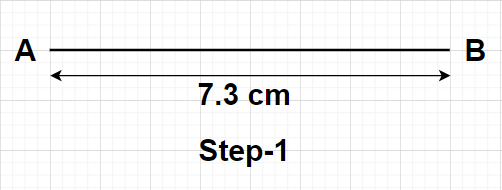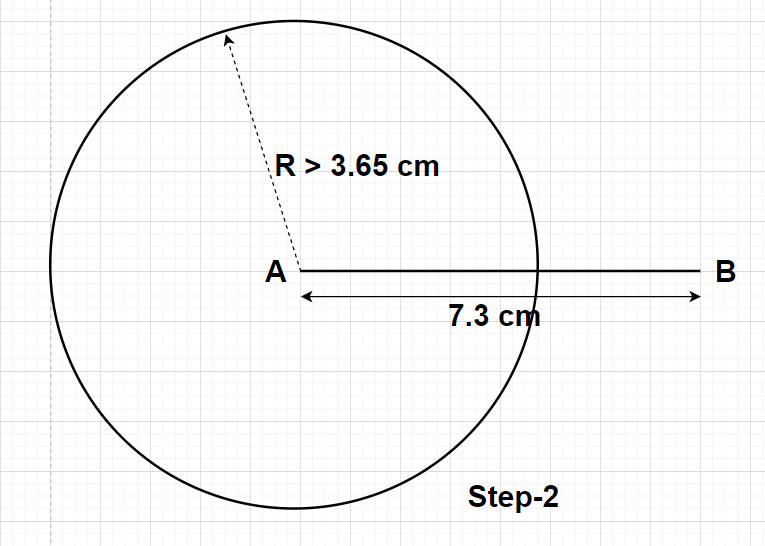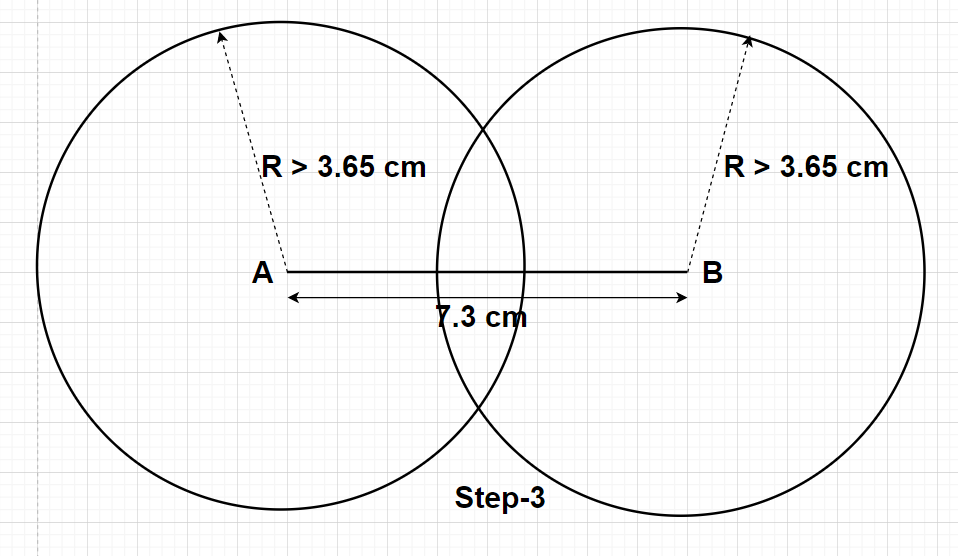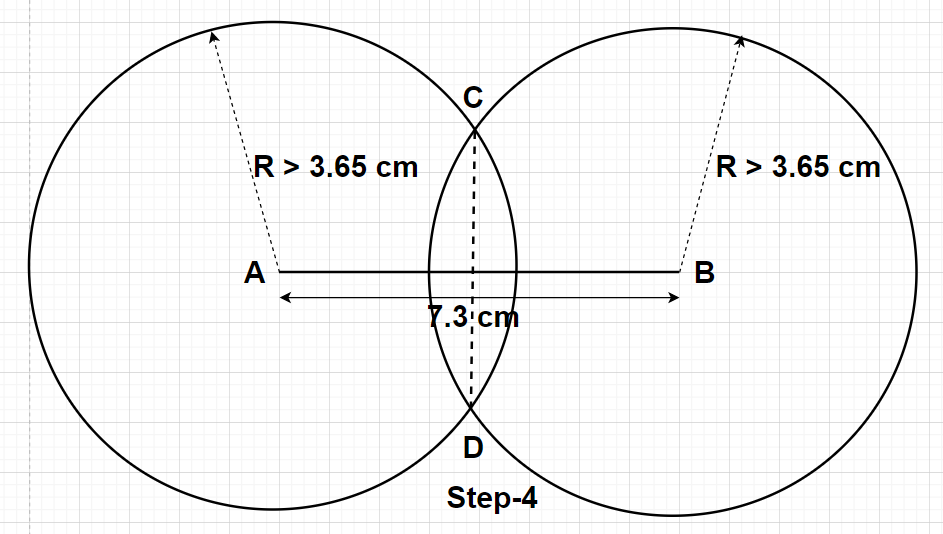
Draw the line segment (
Answer
525.6k+ views
1 likes
Hint: Here, we will proceed by drawing the line segment AB of length 7.3 cm with the help of the scale and then using the compass, follow the basic steps of construction of the axis of symmetry mentioned below.
Complete step-by-step answer:
The following steps of construction are given under:
Step1- Take a scale and draw a line segment of length 7.3 cm. Mark the end points of this line segment as A and B. This is the required

Step2- Now, take a compass and open the ends of the compass more than half of the length of the line segment AB (i.e., more than

Step3- With the same radius as before or with the same distance between the ends of the compass as before, draw another circle by taking point B as the centre. The radius of this circle whose centre lies at the point B is more than half of the length of the line segment AB (i.e., the radius of the circle with centre at B will be more than 3.65 cm).

Step4- Name the points where these two circles will be intersecting as points C and D. Join these points C and D by a dotted line with the help of the scale. This CD is the required axis of symmetry of the line segment

Note: In this particular problem, the radius of the circles drawn will be equal to the distance between the ends of the compass. Here, that radius needs to be more than half of the length of the line segment whose axis of symmetry is required. There is no need to measure it with the help of the scale whereas this can be done by simple estimation.
Complete step-by-step answer:
The following steps of construction are given under:
Step1- Take a scale and draw a line segment of length 7.3 cm. Mark the end points of this line segment as A and B. This is the required

Step2- Now, take a compass and open the ends of the compass more than half of the length of the line segment AB (i.e., more than

Step3- With the same radius as before or with the same distance between the ends of the compass as before, draw another circle by taking point B as the centre. The radius of this circle whose centre lies at the point B is more than half of the length of the line segment AB (i.e., the radius of the circle with centre at B will be more than 3.65 cm).

Step4- Name the points where these two circles will be intersecting as points C and D. Join these points C and D by a dotted line with the help of the scale. This CD is the required axis of symmetry of the line segment

Note: In this particular problem, the radius of the circles drawn will be equal to the distance between the ends of the compass. Here, that radius needs to be more than half of the length of the line segment whose axis of symmetry is required. There is no need to measure it with the help of the scale whereas this can be done by simple estimation.
Latest Vedantu courses for you
Grade 10 | CBSE | SCHOOL | English
Vedantu 10 CBSE Pro Course - (2025-26)
School Full course for CBSE students
₹37,300 per year
Recently Updated Pages
Express the following as a fraction and simplify a class 7 maths CBSE

The length and width of a rectangle are in ratio of class 7 maths CBSE

The ratio of the income to the expenditure of a family class 7 maths CBSE

How do you write 025 million in scientific notatio class 7 maths CBSE

How do you convert 295 meters per second to kilometers class 7 maths CBSE

Write the following in Roman numerals 25819 class 7 maths CBSE

Trending doubts
Fill the blanks with the suitable prepositions 1 The class 9 english CBSE

Difference Between Plant Cell and Animal Cell

Given that HCF 306 657 9 find the LCM 306 657 class 9 maths CBSE

The highest mountain peak in India is A Kanchenjunga class 9 social science CBSE

What is the difference between Atleast and Atmost in class 9 maths CBSE

What is pollution? How many types of pollution? Define it




